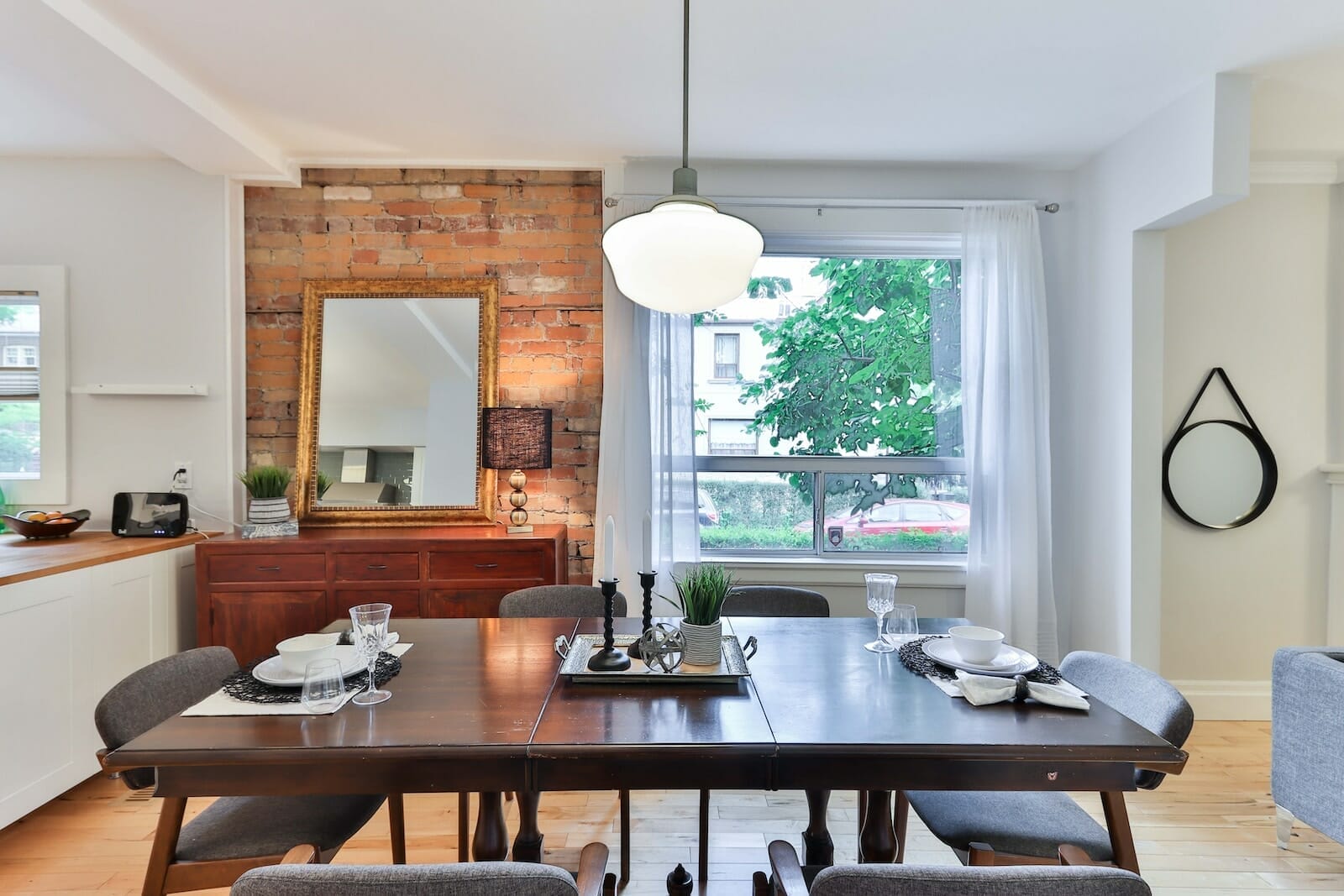Here are some of the most common materials used for building cabin houses in Malaysia:
- Wood – Wood is a classic cabin construction material. Often used for framing, roofing, siding, floors, and decorative elements. Types like pine, cedar and teak are popular.
- Brick – Brick is commonly used for the exterior walls of cabins in Malaysia. Provides good insulation and durability in tropical climates.
- Stone – Natural stone can be used for accent walls, fireplaces, and decorative touches. Granite, marble, and slate are examples.
- Concrete – Reinforced concrete is widely used for foundations, columns, and floor slabs in Malaysian cabins.
- Glass – Large windows and glass doors are used extensively to connect interiors with the outdoors. Double pane helps control heat.
- Metal – Metals like steel and aluminium are used in roofing, beams, frames, and hardware. Adds strength.
- Drywall – Interior walls in most modern cabins are constructed using drywall panels that are easy to install.
- Insulation – Insulation in walls, roofs and floors helps regulate interior temperatures and noise.
- Tiles – Ceramic, terrazzo, and natural stone tiles are popular flooring choices in Malaysian cabins.
In summary, a blend of wood, masonry, glass, and other materials are used to create durable, climate-appropriate, and aesthetically pleasing cabin houses. Locally available resources are often utilized.
What are the typical ceiling heights and window sizes in Malaysian cabin houses?
Here are some typical ceiling height and window size details in Malaysian cabin houses:
- Ceiling Heights – Standard ceiling heights range from 2.4 – 3 meters (8 – 10 feet). Cabins with lofts or vaulted A-frame layouts can be 3.5 – 6 meters (12 – 20 feet) high at the peak.
- Window Sizes – Average window sizes are 1200 x 1200 mm (4 x 4 feet) or 1200 x 1500 mm (4 x 5 feet). Large picture windows up to 2400 x 1800 mm (8 x 6 feet) provide ample light and ventilation.
- Door Heights – Entry doors are around 2100 mm (7 feet) high on average. Patio doors are often 2100 x 900 mm (7 x 3 feet).
- Kitchen Windows – Over the sink windows measure around 900 x 600 mm (3 x 2 feet) for airflow.
- Bathroom Windows – Smaller windows around 600 x 600 mm (2 x 2 feet) are common to provide light while maintaining privacy.
- Loft Windows – Skylights, dormers, and elongated windows give loft spaces natural light and ventilation as needed.
Maximizing natural light and air circulation are priorities in tropical Malaysia. Large windows, high ceilings, and strategically placed openings help make cabin interiors feel open and airy.
How much outdoor living space do Malaysian cabin houses usually include?
Malaysian cabin houses typically incorporate ample outdoor living areas given the tropical climate:
- Front Porch – A covered front porch of 50 – 100 sq ft is commonly built for sitting outdoors.
- Back Patio – Larger back patios around 200 – 500 sq ft provide space for dining, BBQs, etc.
- Decks – Elevated decks off the back of the cabin range from 100 – 300 sq ft. Great for views.
- Verandas – 50 – 150 sq ft covered verandas are popular off master bedrooms or living areas.
- Yards – Grass yards of 500 – 2000+ sq ft surround the cabin for recreation.
- Courtyards – Small central courtyards (100 – 400 sq ft) feature in some layouts.
- Gazebos – Separate gazebos or pavilions up to 300 sq ft are built for gatherings.
- Driveways – Long driveways allow parking away from the cabin itself.
Integrating indoor and outdoor areas is key in Malaysian cabin design. Outdoor rooms protected from the sun and rain enable owners to enjoy the tropical climate.
What climate control features like A/C are common in Malaysian cabin houses?
Here are some popular climate control features found in Malaysian cabin houses:
- Air Conditioning – Split unit or central A/C systems provide cooling and dehumidification. Essential in the Malaysian heat.
- Fans – Ceiling fans circulate air in rooms without A/C. Exterior fans aid ventilation.
- Insulation – Insulation in walls and roofs helps moderate interior temperature. Reduces heat gain.
- Reflective Roofing – Reflective paint or tiles reflect sunlight to keep attic temperatures cooler.
- Window Awnings – Overhangs above windows block direct sun exposure while allowing light and breeze.
- Window Films – Solar control window films reduce heat gain and glare through glass.
- Vents – Strategic roof and gable vents with screens facilitate cross ventilation.
- Shade Trees – Planting foliage like palms around the cabin creates cooling shade.
- Water Features – Small ponds or fountains help humidify and cool the surrounding air.
With Malaysia’s hot, humid climate, cabins prioritize airflow, shade, insulation, and air conditioning to maintain comfort. Passive cooling techniques are used alongside mechanical systems.
What types of foundations and structures are used for cabin houses in Malaysia?
Popular foundation and structural systems for Malaysian cabin houses include:
- Concrete Piles – Reinforced concrete piles drilled into the ground provide a stable foundation in variable soil conditions.
- Concrete Footings – Concrete strip or pad footings transfer structural loads below grade.
- Concrete Slabs – Many cabins are built on concrete slab-on-grade foundations poured on compacted ground.
- Post and Pier – Elevated cabins use a post and pier system with masonry or concrete piers supporting wood posts or columns.
- Wood Frame – The above foundation supports a wood structural frame of stud walls and joists for floors and roofs.
- Timber Beams – Large dimensional lumber beams and posts add strength and visual appeal.
- Steel Frame – Light gauge steel framing offers an alternative structural framework option.
- Masonry – Some cabins utilize masonry systems like brick or concrete masonry unit (CMU) block













